Buoyancy
1/48
There's no tags or description
Looks like no tags are added yet.
Name | Mastery | Learn | Test | Matching | Spaced |
|---|
No study sessions yet.
49 Terms
F1
(1)
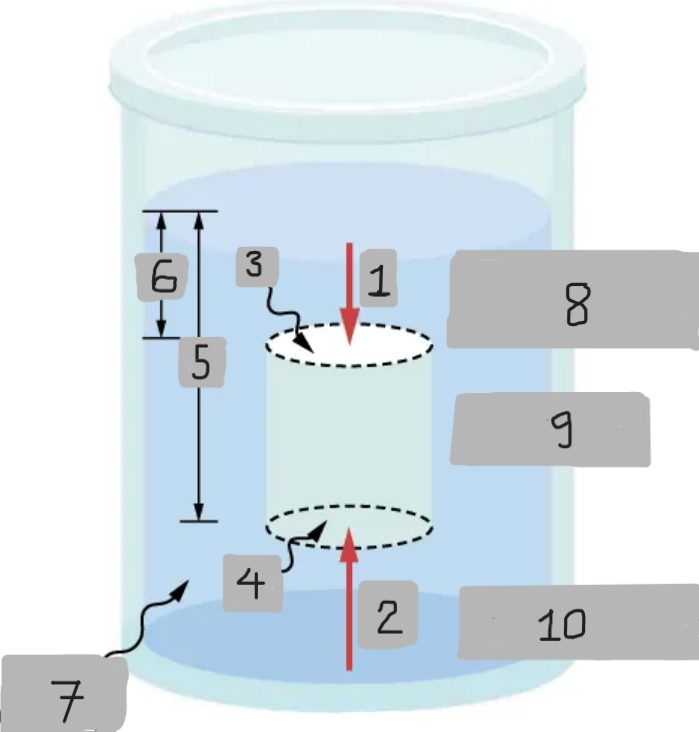
F2
(2)
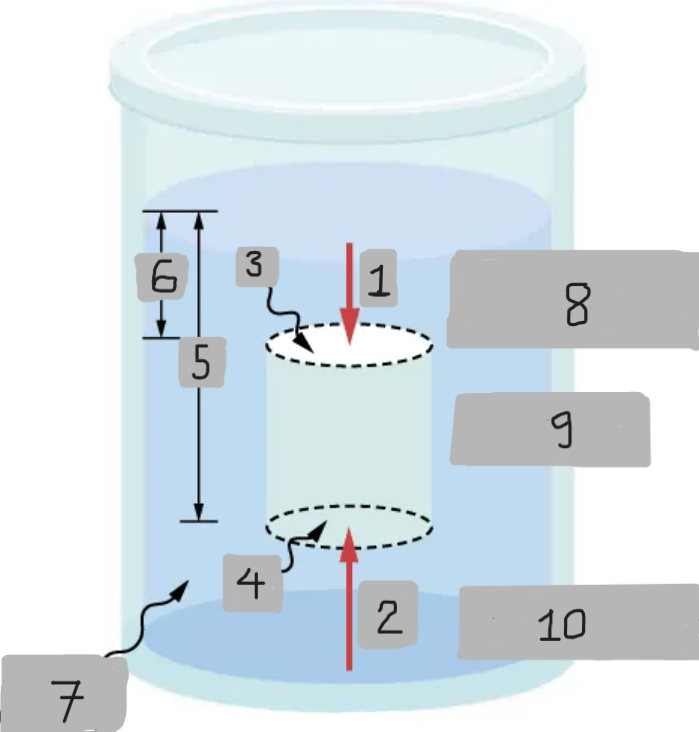
A
(3) & (4)
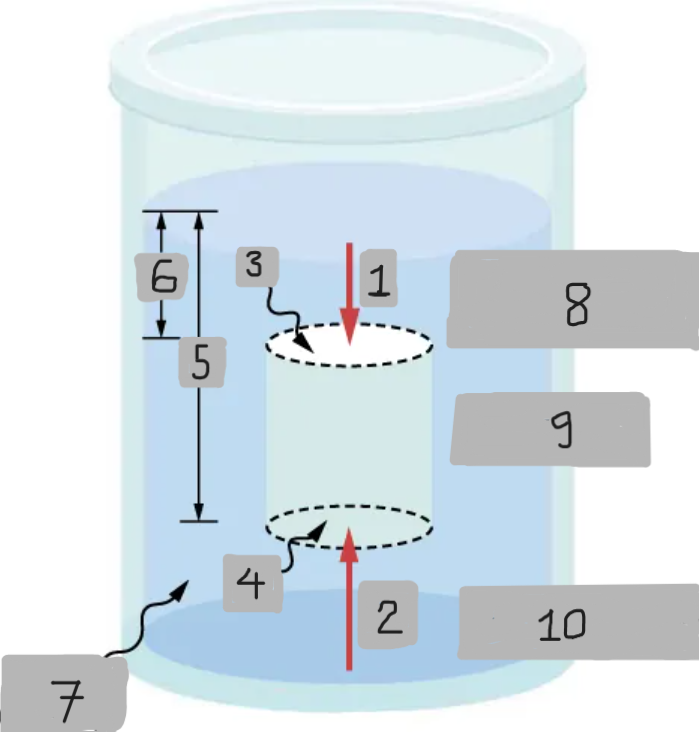
h2
(5)
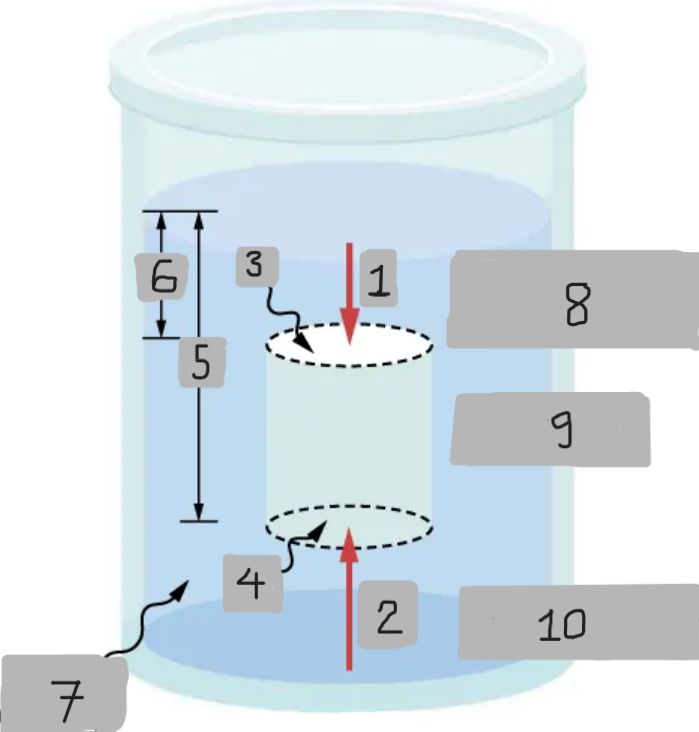
h1
(6)
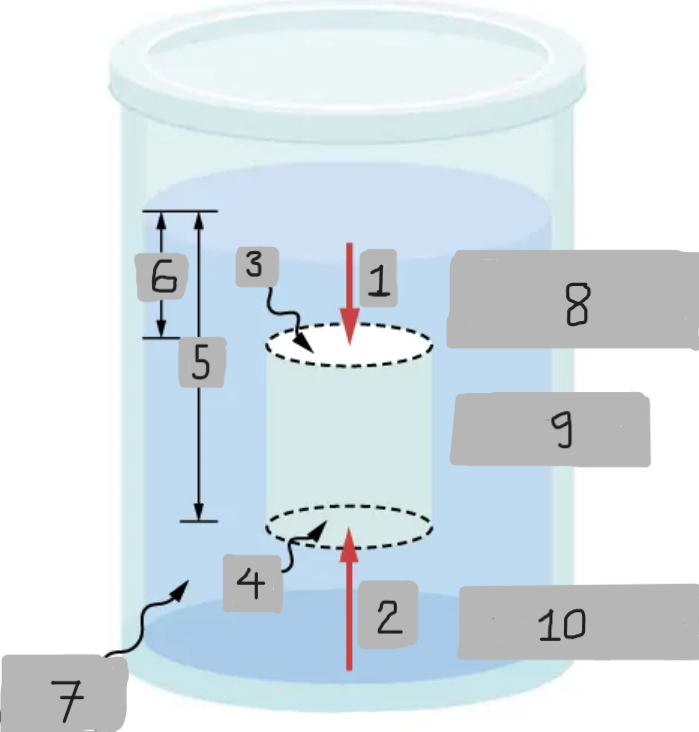
Fluid of density ρ
(7)
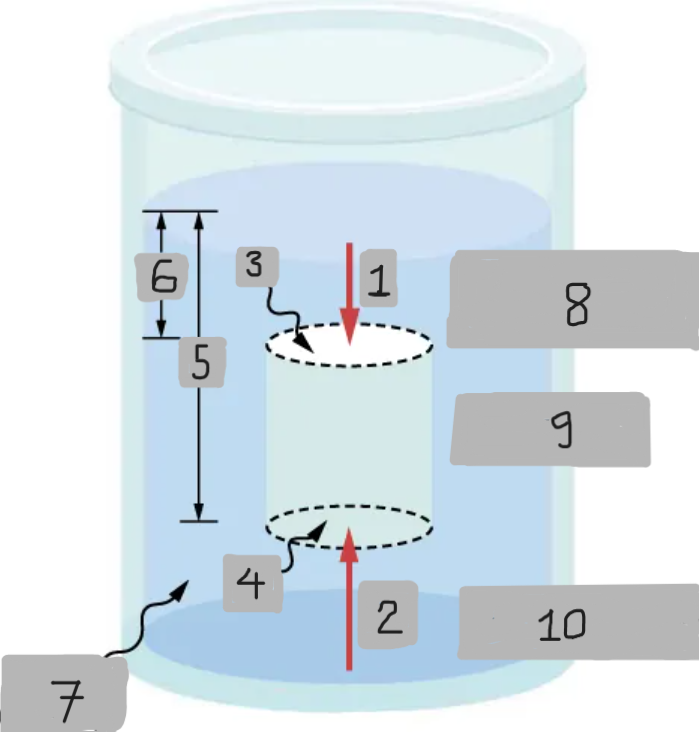
F1 = p1A = h1ρgA
(8)
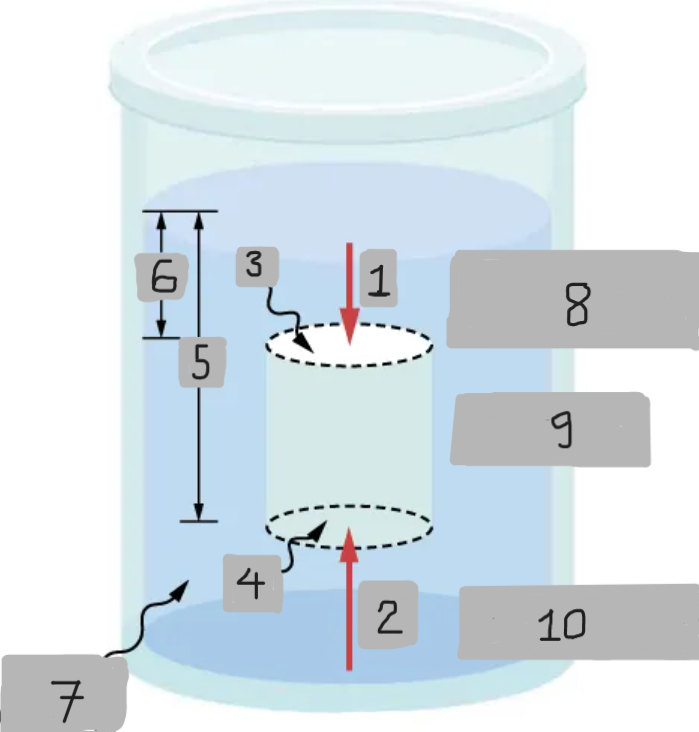
Fb = F2 - F1
(9)
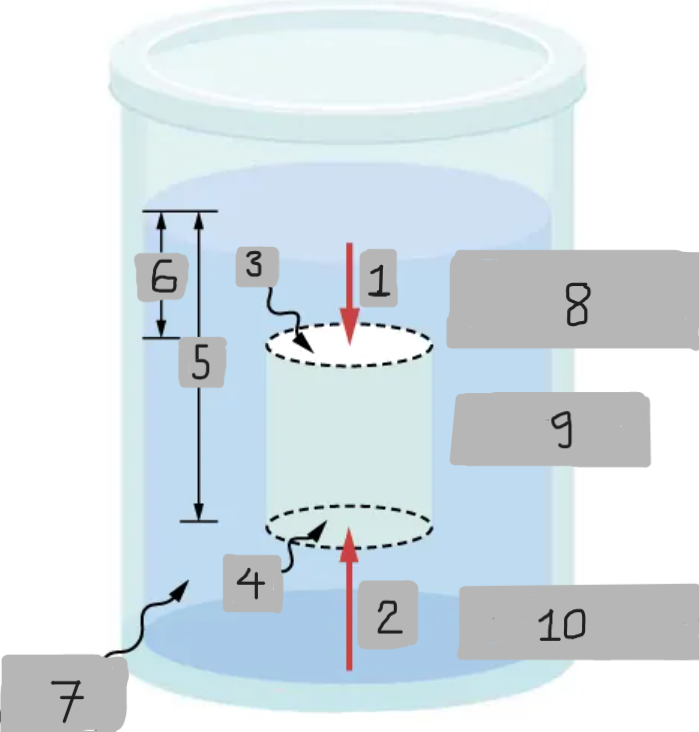
F2 = p2A = h2ρgA
(10)

Buoyant force
The upward force on any object in any fluid.
Object with buoyant force greater than weight
The object rises in the fluid when released.
Object with buoyant force less than weight
The object sinks when released.
Object with buoyant force equal to weight
The object remains suspended at its present depth (e.g., neutrally buoyant diver or floating object).
Buoyant force presence
Always exists on an object immersed in a fluid, regardless of whether it floats, sinks, or is suspended.
Pressure-depth relation
Fluid pressure increases with depth according to p = hρg.
Vertical force difference in a submerged object
The upward force on the bottom is greater than the downward force on the top because of pressure difference.
Origin of buoyant force
The net upward force on a submerged object, Fb, arises from pressure differences; horizontal forces cancel.
Archimedes’ principle
The buoyant force on an object equals the weight of the fluid displaced by the object, expressed as Fb = wfl
Physical explanation of buoyant force
Removing an object from a fluid allows displaced fluid of weight wfl to fill its place. Since this fluid’s weight is supported by the surrounding fluid, the buoyant force equals the weight of the displaced fluid.
It acts upwards, perpendicular to the surface.
How does the fluid pressure on the bottom of the body acts?
It acts downwards, perpendicular to the surface.
How does the fluid pressure on the top of the body acts?
It acts inwards, perpendicular to the surface.
How does the fluid pressure on the sides of the body acts?
The pressure experienced by the bottom of the body.
What causes the net buoyant force on the swimmer’s body?
Reason some people sink in water
Person’s body density is greater than water’s density (less fat, more muscle/bone), their weight exceeds the buoyant force, causing sinking.
Reason some people float naturally
People with lower average body density (more fat content, air in lungs) displace enough water to balance their weight, so they float.
Effect of low body fat on buoyancy
Fat is less dense than water, so it increases buoyancy. Having less body fat raises average body density, making the buoyant force smaller relative to weight, which causes a greater tendency to sink.
Effect of high body fat on buoyancy
Fat is less dense than water, so higher fat content lowers average body density. This increases buoyancy, making it easier for the body to float.
Buoyant force during underwater swimming
Always acts upward, equal to the weight of displaced water, regardless of whether a swimmer is floating or moving underwater.
Method of how swimmers sink underwater
By exhaling air from their lungs, swimmers reduce buoyancy (less air = higher body density), allowing them to sink just below the surface.
Method of how swimmers stay submerged in water
Swimmers use muscle control and downward strokes (arms and legs) to counteract buoyancy and keep themselves under the surface.
Role of the technique in underwater swimming
Streamlined body position and efficient kicks minimize upward drift from buoyancy and maximize forward speed.
Advantage of underwater swimming in races
Water resistance is lower beneath the surface than at the air-water boundary, making underwater glides faster and more efficient.
Wave drag
Resistance caused by splashing and generating surface waves; occurs mainly at the air–water boundary.
Frictional drag
Resistance from water rubbing against the swimmer’s body surface (skin friction); depends on smoothness and suit material.
Effect of oil or lotion on frictional drag
Instead of reducing drag, oils/lotions usually wash off or increase turbulence in water, so they do not effectively reduce frictional drag. Swimmers use smooth suits and shaved skin for drag reduction.
Form drag
Resistance like a boat pushing water out of the way, just like that, the swimmer’s body shape decides how much water must be displaced. A streamlined shape means less resistance.
Step 1: Chest movement
The chest presses slightly downward to start the body’s wave-like undulation.
Step 2: Hip movement
As the chest presses down, the hips rise upward, continuing the wave through the body.
Step 3: Leg action
The legs snap downward together in a dolphin kick, finishing the wave and providing propulsion.
Step 4: Arm Pull
Both arms sweep outward, then inward under the chest in a keyhole shape, generating forward drive.
Step 5: Arm recovery
Arms exit the water together and swing forward over the surface in a smooth recovery motion.
Step 6: Breathing
The head lifts slightly forward during arm recovery for a breath, then returns into the water to stay streamlined.
Step 7: Timing
Two dolphin kicks occur per cycle: one during the arm pull and one during the arm recovery.
Archimedes
An ancient Greek mathematician after whom the principle of Buoyancy is named.
displaces, displace, buoyant force, float
A solid lump sinks because it _________ little water, producing a buoyant force smaller than its weight. However, molding it into a boat shape, that same clay will _______ more water, increasing _____________ enough to _____.
How fluids can make objects float
A denser fluid has more weight in the same space (volume). When an object pushes this fluid aside, the fluid pushes back with a larger buoyant force, helping the object float.
Submersion of floating objects
The fraction submerged depends on the object’s density relative to the fluid’s density.
Fraction submerged
The ratio of the volume submerged to the volume of the object.
Mathematical representation of the fraction submerged
Fraction submerged = Vsubmerged/Vobject = Vdisplacedfluid/Vobject